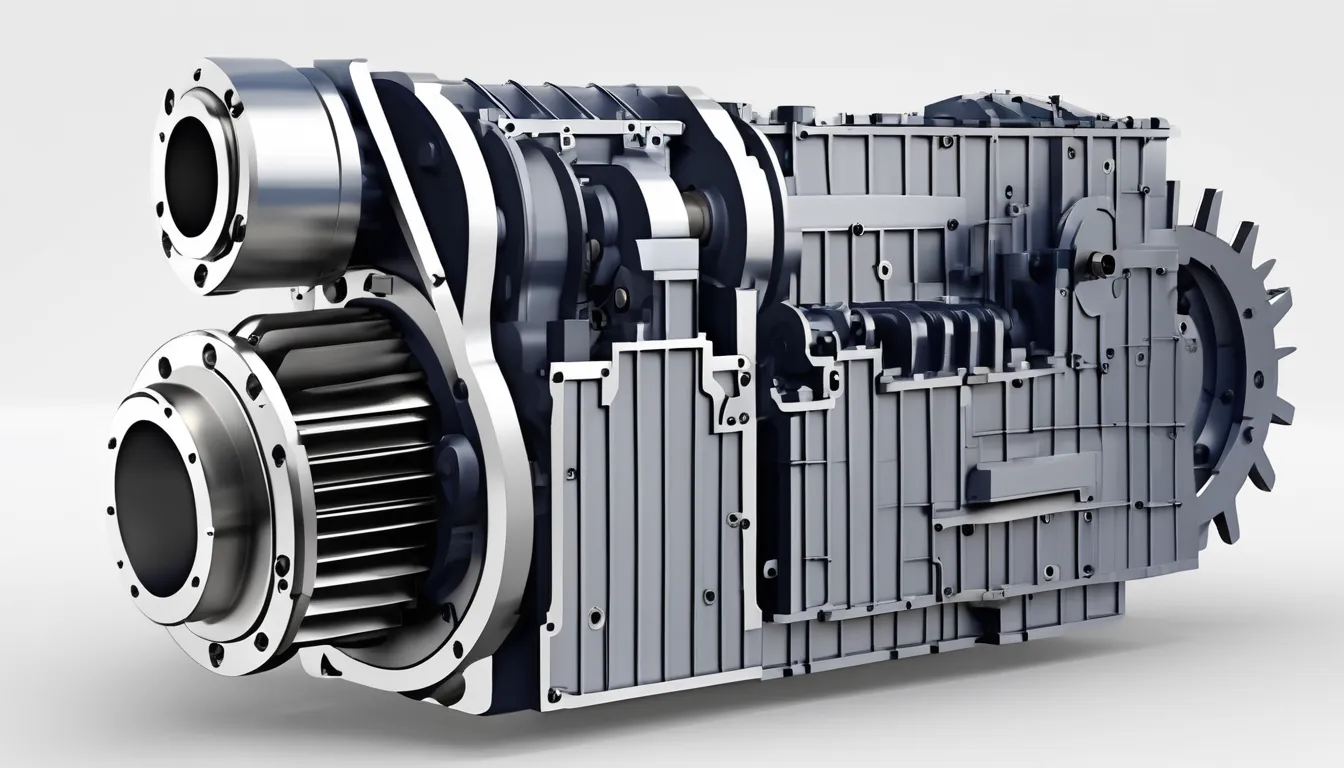When you think about gearbox manufacturing, it’s essential to grasp the competitive landscape that defines this sector. You’ll encounter major players like Siemens and SEW-Eurodrive, but it’s the emerging trends—like smart technology and sustainability—that are reshaping the market. As you explore how companies distinguish themselves through innovation and customer service, consider the challenges they face, such as rising costs and labor shortages. What strategies are they employing to stay competitive in such a dynamic environment? The answers might surprise you.
Overview of Gearbox Manufacturing
china gearbox manufacturer manufacturing plays a crucial role in various industries, from automotive to renewable energy. You mightn’t realize it, but gearboxes are vital components that transfer power and torque in machinery. In essence, they help optimize efficiency and control speed in a wide range of applications. Whether you’re looking at electric vehicles or wind turbines, the gearbox is often the unsung hero that ensures everything runs smoothly.
When diving into the manufacturing process, it’s essential to understand the precision engineering required. You’ve got to consider materials, design specifications, and production methods. Each gearbox must meet stringent quality standards to perform reliably under different conditions. This means that manufacturers invest heavily in research and development, pushing for innovations that improve durability and performance.
Moreover, sustainability is becoming increasingly important in gearbox manufacturing. As industries aim for greener solutions, manufacturers are exploring eco-friendly materials and energy-efficient production methods.
Key Industry Players
The landscape of gearbox manufacturing features several key industry players that shape the market’s dynamics. Companies like Siemens, SEW-Eurodrive, and Nord Drivesystems are at the forefront, providing innovative solutions and high-quality products.
You’ll find that these firms not only offer a wide range of gearboxes but also focus on customization to meet specific client needs.
In addition to these giants, other notable players include Bonfiglioli and Rexnord, both recognized for their specialized designs and robust performance. These companies leverage advanced technologies and manufacturing processes to maintain their competitive edge.
When evaluating gearbox suppliers, it’s essential to consider their reputation for reliability and customer service, as these factors significantly impact your operations.
Moreover, regional players also contribute to the competitive landscape, providing localized support and services.
As you navigate this sector, keep an eye on mergers and acquisitions, as they often reshape market dynamics and create new opportunities.
Emerging Trends and Innovations
Innovation drives the gearbox manufacturing industry forward, introducing new technologies and solutions that enhance efficiency and performance.
You’ll notice a growing emphasis on lightweight materials, such as advanced composites and aluminum alloys, which reduce overall weight without sacrificing strength. This shift not only improves the fuel efficiency of vehicles and machinery but also optimizes the energy consumption of industrial applications.
Additionally, the integration of smart technology into gearbox systems is on the rise. By incorporating IoT devices, manufacturers enable real-time monitoring and predictive maintenance, allowing you to minimize downtime and enhance reliability.
These smart gearboxes can analyze operational data, leading to more informed decision-making.
Another trend worth noting is the push towards more sustainable manufacturing practices. Companies are increasingly adopting eco-friendly processes and materials, aligning with global efforts to reduce carbon footprints.
This includes recycling used components and utilizing renewable energy sources in production.
Challenges in Gearbox Production
Facing increasing demand for advanced gearbox systems, manufacturers encounter several challenges that can hinder production efficiency and quality. One major challenge is the rising cost of raw materials. As prices fluctuate, you might struggle to maintain your budget without sacrificing quality. Additionally, the complexity of modern gearbox designs demands advanced manufacturing techniques, which can be difficult to implement effectively.
Labor shortages are another pressing issue. Finding skilled workers who can operate sophisticated machinery and maintain high standards is becoming increasingly difficult. Without the right talent, production lines may experience delays or errors.
Lastly, regulatory compliance adds another layer of complexity to gearbox production. Adhering to safety and environmental standards can be time-consuming and costly, requiring constant updates to processes and materials.
Here’s a table summarizing these challenges:
| Challenge | Impact on Production | Possible Solution |
|---|---|---|
| Rising Material Costs | Increased production costs | Seek alternative suppliers |
| Complex Designs | Longer production times | Invest in training |
| Labor Shortages | Reduced production capacity | Upskill existing workforce |
| Regulatory Compliance | Increased operational costs | Regular audits and updates |
| Technological Advances | Higher investment in equipment | Gradual technology integration |
Strategic Approaches for Competitiveness
To thrive in the competitive landscape of gearbox manufacturing, companies must adopt strategic approaches that enhance efficiency and adaptability. By focusing on innovation, operational excellence, and customer-centric practices, you can carve out a competitive edge.
- Invest in Technology: Embrace automation and advanced manufacturing technologies. Implementing robotics and AI can streamline production processes, reduce errors, and lower costs. This not only boosts productivity but also enables you to respond quickly to market demands.
- Enhance Supply Chain Management: A robust supply chain is essential for competitiveness. Collaborate with suppliers to ensure timely delivery of high-quality materials. By fostering strong relationships, you can minimize disruptions and optimize inventory levels, leading to improved responsiveness.
- Focus on Sustainability: As environmental concerns grow, adopting sustainable practices can differentiate you from competitors. Invest in eco-friendly materials and energy-efficient processes. This not only meets customer expectations but can also reduce costs in the long run.
Conclusion
In conclusion, navigating the gearbox manufacturing landscape requires you to stay informed about key players and emerging trends. By embracing innovative designs and integrating smart technologies, you can enhance your competitive edge. However, don’t overlook the challenges, like rising material costs and labor shortages. Focus on strategic approaches, such as automation and eco-friendly practices, to thrive in this dynamic market. Staying proactive will ensure you remain a strong contender in the evolving gearbox industry.

